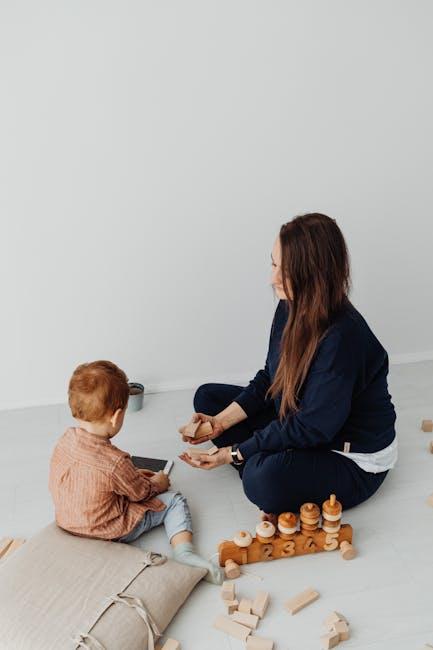Guiding Beginners Through the Essentials of Homeschooling

So, you’ve decided to jump on the homeschooling bandwagon and embark on the wild and wonderful journey of educating your little ones from the comfort of your own home. But where do you even begin? Fear not, novice homeschoolers, for we are here to guide you through the wacky world of curriculum, lesson planning, and surviving long days surrounded by your precious progeny. Get ready to learn the essentials of homeschooling - with a sprinkle of humor and a touch of sanity-saving tips along the way. Let’s dive in and turn your living room into a classroom!
Understanding the Basics of Homeschooling
Homeschooling can be like riding a roller coaster blindfolded – scary, exhilarating, and occasionally you’ll want to throw up. But fear not, brave homeschooling warriors, for with a little patience and a lot of coffee, you can navigate the wild world of educating your offspring from the comfort of your own home.
Before you dive headfirst into the deep end of homeschooling, it’s important to understand the basics. Here are a few key points to keep in mind:
- Curriculum: Choose a curriculum that suits your child’s learning style and your sanity level. There are plenty of options out there, from traditional textbooks to online programs to unschooling. Just remember, there’s no one-size-fits-all approach.
- Schedule: Homeschooling doesn’t mean you have to wake up at the crack of dawn to start lessons. Create a schedule that works for your family, whether that means sleeping in and doing math in your pajamas or hitting the books early and taking a mid-morning dance break.
- Socialization: Contrary to popular belief, homeschoolers do interact with other human beings. Joining homeschool co-ops, sports teams, or community classes can provide plenty of opportunities for your child to make friends and learn important social skills.
So buckle up, homeschooling parents, and get ready for the ride of your life. Remember, it’s okay to have bad days and doubt yourself – just don’t forget to celebrate the small victories and cherish the moments of learning and growth. You’ve got this!

Setting up a Homeschool Schedule and Routine
So you’ve decided to take the plunge into homeschooling, huh? Welcome to the world of wearing multiple hats, being a teacher, parent, and referee all at the same time! But don’t worry, creating a schedule and routine will help keep things on track. Here are some tips to get started:
- Set up designated school hours: This will help create a sense of structure and routine for both you and your kids. Plus, you can mentally prepare to switch from “parent mode” to “teacher mode” during these hours.
- Plan breaks throughout the day: Let’s be real, kids have the attention span of a goldfish. Schedule in short breaks throughout the day to give everyone a chance to stretch their legs, grab a snack, or take a mental breather.
Don’t forget to factor in time for subjects like art or PE – because, let’s face it, having a dance party in the living room totally counts as physical education. And lastly, be flexible with your schedule. Some days will go smoothly, while others will feel like herding cats. Just roll with it and remember that tomorrow is a fresh start!

Choosing the Right Curriculum for Your Child
When it comes to choosing the perfect curriculum for your child, it can feel like navigating a jungle full of wild beasts and hidden treasures. But fear not, brave parents! With a little bit of guidance, you can find the golden ticket that will lead to educational paradise for your little one.
First and foremost, consider your child’s learning style. Are they a visual learner who thrives on colorful images and diagrams? Or perhaps they’re an auditory learner who absorbs information through music and spoken word. **It’s important to choose a curriculum that caters to your child’s unique way of learning**.
Next, think about your own teaching style. Are you a laid-back, creative soul who thrives on spontaneity? Or are you a Type-A, organized freak who loves color-coded schedules and detailed lesson plans? **Choosing a curriculum that aligns with your own teaching style will make your life a whole lot easier**.
And don’t forget to consider your child’s interests and passions. **If they’re obsessed with dinosaurs, why not choose a curriculum that incorporates prehistoric creatures into every lesson?** Remember, the key to a successful homeschooling journey is to keep your child engaged and excited about learning.

Creating a Support System for Homeschooling
Homeschooling can often feel like a solo mission, but it doesn’t have to be that way! By creating a support system for your homeschooling journey, you can lighten the load and have a lot more fun along the way.
One way to create a support system is by joining a homeschooling co-op. These groups are a great way to connect with other homeschooling families, share resources, and even plan field trips together. Plus, it’s always nice to have someone to commiserate with when the math lesson gets a little too intense.
Another way to get support is by connecting with other homeschooling parents online. There are countless Facebook groups and forums where you can ask for advice, share success stories, and maybe even swap curriculum materials. Just be sure to watch out for the occasional online troll – they can be more terrifying than a pop quiz on a Monday morning.
Finally, don’t forget to enlist the help of family and friends. Grandparents, aunts, uncles, and even neighbors can be valuable resources when it comes to homeschooling. Whether it’s helping out with a science experiment or just giving you a much-needed break, having a support system in place can make all the difference in your homeschooling journey.

socialization-into-homeschooling”>Incorporating Socialization into Homeschooling
One of the great benefits of homeschooling is the flexibility it offers when it comes to incorporating socialization opportunities for your children. Here are some creative ways to ensure your kids get the interaction they need:
- Join a homeschool co-op where your child can make friends and participate in group activities. Who says homeschoolers can’t have a clique?
- Take field trips to museums, parks, and other educational venues. It’s like a playdate, but with a side of learning!
- Sign your child up for extracurricular activities like sports, music lessons, or art classes. Who knows, they might even make a friend or two!
Don’t forget about the power of the internet! Virtual playdates and online forums can provide your child with social interaction without ever having to leave the house. It’s like having a social life on autopilot.
And remember, socialization doesn’t always have to involve other kids. Encourage your child to interact with people of all ages and backgrounds. Who knows, they might even learn something new along the way!
Utilizing Resources and Tools for Homeschooling Success
Looking for ways to make homeschooling easier and more successful? Look no further! Here are some resources and tools that will help you thrive in your new role as your child’s teacher.
First up, let’s talk about online learning platforms. Sites like Khan Academy, ABCmouse, and Prodigy make learning fun and engaging for kids. Plus, they provide lessons and activities in a variety of subjects, so you can keep your child’s education well-rounded.
Next, consider investing in some educational apps. Apps like Duolingo, BrainPOP, and Scratch Jr. offer interactive learning experiences that will keep your child entertained while they’re learning valuable skills.
Don’t forget about online communities! Websites like Pinterest, Facebook groups, and homeschooling forums are great places to find support, resources, and ideas from other parents who are in the same boat as you.
FAQs
What are the top three essentials of homeschooling for beginners?
First and foremost, patience – lots and lots of patience. Second, a solid curriculum that fits your child’s learning style. And finally, a good support system of other homeschooling parents who can offer guidance and encouragement when you start to question your sanity.
How can beginners create a learning environment that fosters success?
It’s all about finding the right balance between structured learning and flexibility. Create a designated school area with minimal distractions, but don’t be afraid to take learning outside or mix things up with field trips. And remember, snacks are always a good motivator.
What’s the best way to keep track of progress and milestones?
Some parents swear by detailed lesson plans and daily logs, while others prefer a more relaxed approach. Find a system that works for you, whether it’s a fancy planner or just a stack of Post-It notes. And don’t forget to celebrate even the smallest victories – like finally mastering long division.
How can beginners handle the social aspect of homeschooling?
Joining a homeschool co-op or local support group can provide plenty of opportunities for socializing and making new friends. And don’t underestimate the power of playdates, extracurricular activities, and good old-fashioned family time – your kids will thank you when they’re not awkwardly trying to make small talk at their high school prom.
Get ready to embark on this exciting educational journey!
As you delve into the world of homeschooling, remember to take it one step at a time, stay organized, and above all, don’t be afraid to get a little creative with your lesson plans! With dedication, patience, and a whole lot of coffee, you’ll soon find yourself navigating the ins and outs of homeschooling like a pro. So grab your textbooks, sharpen those pencils, and get ready for a wild ride through the wonderful world of education from the comfort of your own home. Happy homeschooling!






